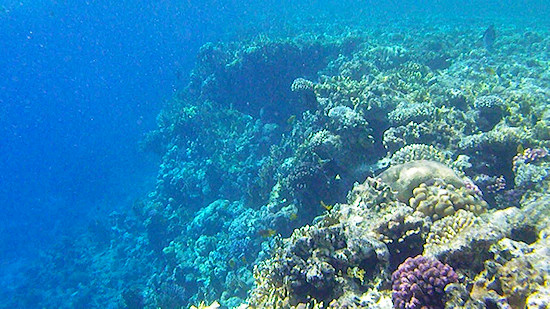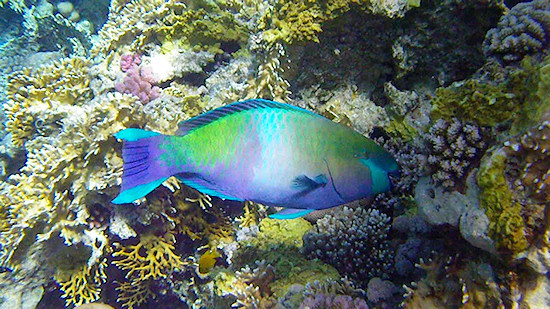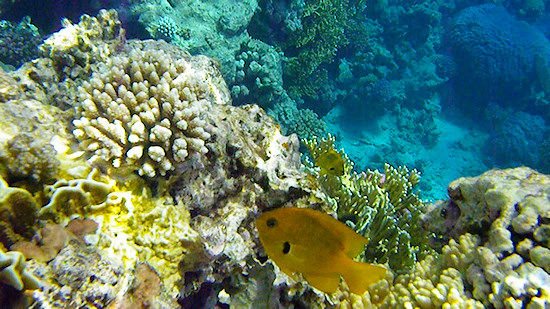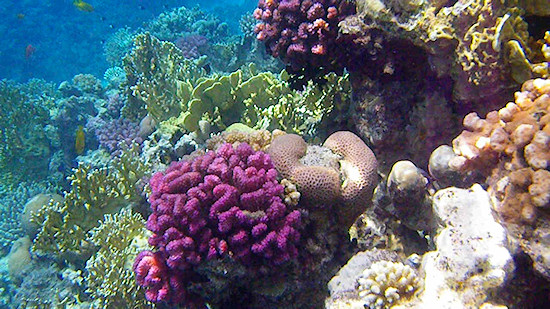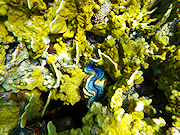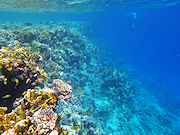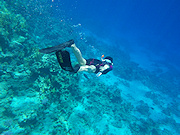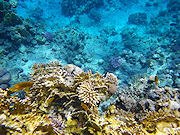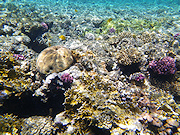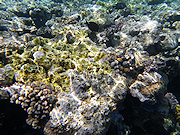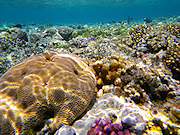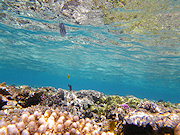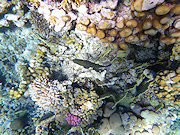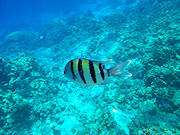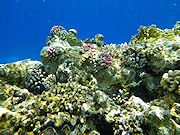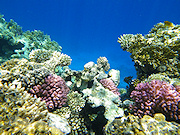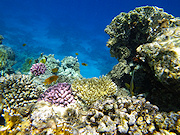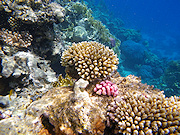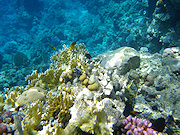Underwater cameras test 2010
5. Pentax Optio W90
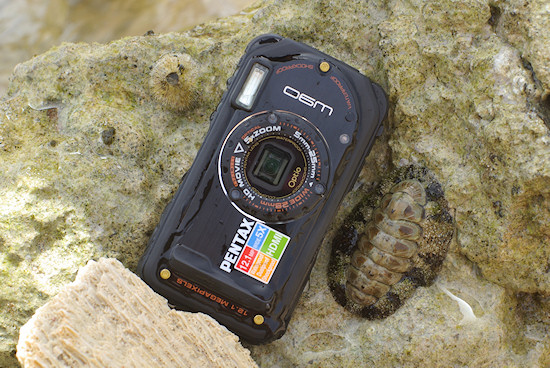 |
Last year Pentax widened its series of waterproof point and shoot “W” cameras by two new models. In June last year an Optio W80 was unveiled – it differed from the W60, tested by us, in sensor, tougher body and a widened video mode. The newest representative of the “W” series – the Optio W90 - features additionally a bigger LCD screen, an HDMI port and a casing which is even more durable. As a result the producer offers us a 12.1 Mpix compact camera with the HD video mode (1280×720 pixels at 30 fps) and a 2.7 inches LCD screen with 230K dots resolution.
The Pentax Optio W90 comes with outstanding JIS Class 8 waterproof and remarkable dustproof performance, equivalent to JIS Class 6 which, according to the operating manual, guarantees you the possibility of non-stop shooting for 2 hours at the depth of 6 m. The Optio W90 also passed the fall test under PENTAX-original testing standards (falling from a height of 1.2 meters, onto a surface of 5cm-thick plywood), conforming to the Method 516.5-Shock of the MIL-Standard 810F.
Design and build quality
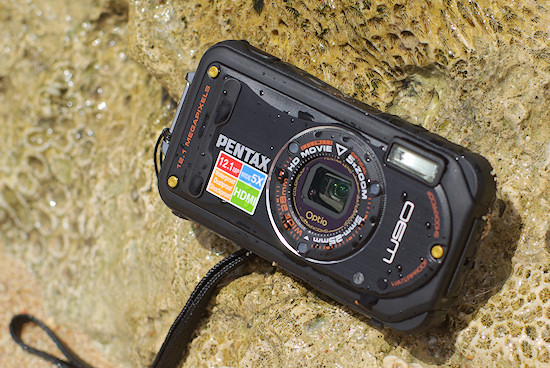 |
The housing of the Optio W90 is very robust. At the front of the camera we find a brushed aluminium plate and the side panes are made of porous plastics of high quality which is supposed to prevent slipping off our hands. Nothing creaks here and everything is appropriately rugged.
Please Support UsIf you enjoy our reviews and articles, and you want us to continue our work please, support our website by donating through PayPal. The funds are going to be used for paying our editorial team, renting servers, and equipping our testing studio; only that way we will be able to continue providing you interesting content for free. |
- - - - - - - - - - - - - - - - - - - - - - - - - - - - - - - - - - - - - - - - - - - - - - - -
Quite loosely-set buttons (especially the shutter release) and also a distinctly soft cover protecting the LCD screen, bending under even light pressure, might cause some apprehension, though.
There are no blockades on the covers protecting the memory card, battery and contacts but the producer decided to use a two-way opening system. We must move the lever which releases the cover in the vertical plane and only afterwards we might pull it out horizontally which also allows tilting it. Such a solution didn’t create any serious problems and with big gaskets, it was enough to make the device water and dustproof.
| Memory card and battery | Ports |
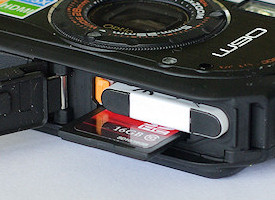 |
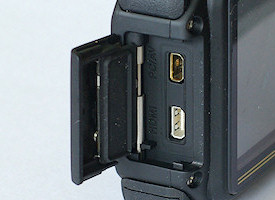 |
The layout of buttons was copied from the older model. On the upper side we see just the power button and the shutter release. At the back of the barrel, on the right from the LCD screen, were positioned the zoom buttons and the playback key right below them. Beneath we get the “OK” button which also is used to change information displayed on the LCD screen and is surrounded by cursors which allow us to navigate the menu and to access the thematic modes, flash settings, self timer settings and the macro.
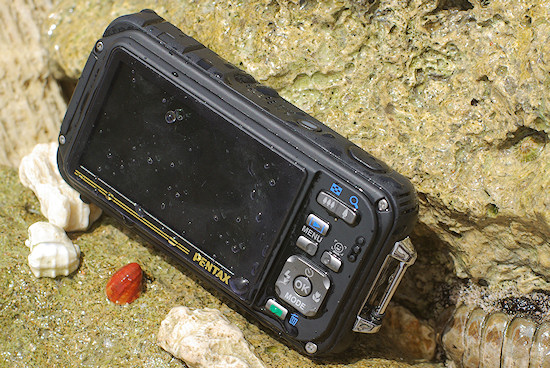 |
At the very bottom there is a green button which gives you the access the additional quick menu. You can freely tweak it according to your needs and it allows you a fast access to the chosen settings using directional buttons. The user can attribute one of more than a dozen options to every button, like e.g. image definition, quality of pictures, AF field selection, ISO speed, exposure compensation, exposure measurement. Additionally, in the playback mode the green button deletes the selected pictures.
Use, cleaning, wear and tear
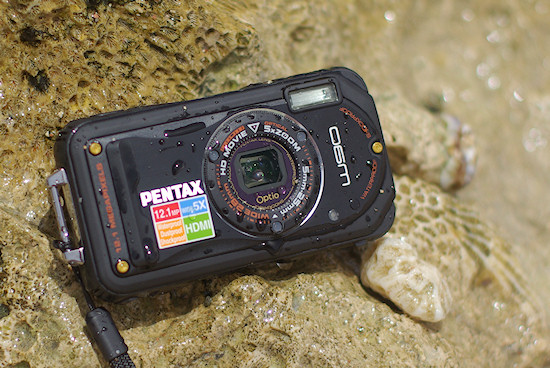 |
The front panel of the Optio W90 is made of brushed aluminium. Small wonder the removal of salt residues is equally difficult as it was in the case of the FT2. When we add many grooves and hollows in plastics elements and LCD screen protecting window which sticks out of the casing, we must be prepared for a long and arduous process of restoring the camera to cleanliness. As always rinsing the camera in fresh water immediately after getting out of the sea helps a lot but this option is not always available.
The lens isn’t set very deeply into the camera body and the protective window is so big that we won’t have any difficulties with removing fingerprints or water from it. A big protecting window has also another advantage. Right after jumping into water it happens that air bubbles are formed up on the lens. Due to laws of physics the most often they tend to gather close to the upper edge of the camera’s barrel and if this edge is situated too close to the front lens such a bubble of air might be visible in a frame. It sporadically happened when we were testing the Olympus, the Panasonic and the Sony. In the case of the Optio W90 it is practically impossible.
The manufacturer boasts of using water-repellent coatings on the glass lens cover. It is supposed to prevent the appearance of blurry smudges, caused by water droplets on the lens, after the resurfacing and taking a picture. Already during the first diving it turned out that these claims should be treated more as a marketing catchphrase than a real thing. In order not to sound hollow we present the aforementioned pictures below.
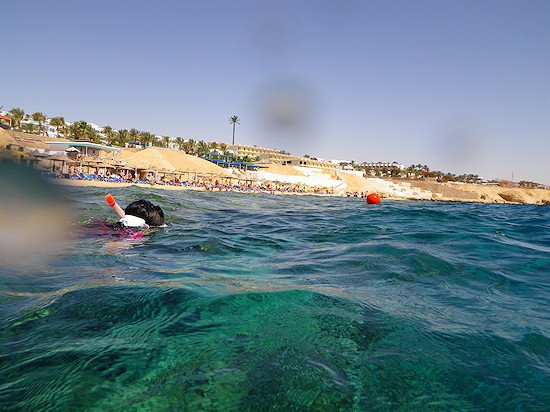 |
Let’s pass on to the LCD screen protecting window now. After a week of usage we found a lot of scratches on it. It is really very damage-prone and the anti-reflection coatings make these scratches very visible underwater when the weather is sunny.
The front panel should be also criticized here because the inscriptions on it started to wear away very quickly.
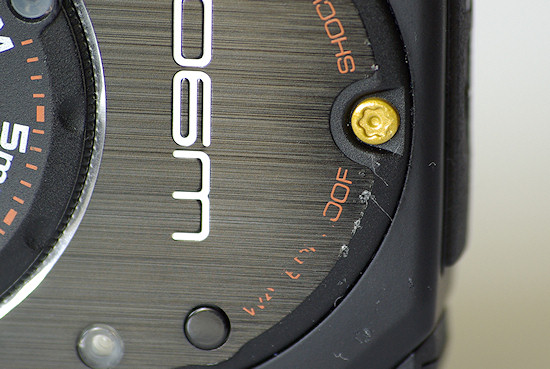 |
During one of fresh water rinsing the camera fell on tiles from the height of about 1.5 m. We must admit it came out unscathed, with just slight scratches on the housing, which are visible in the picture above
Underwater usage
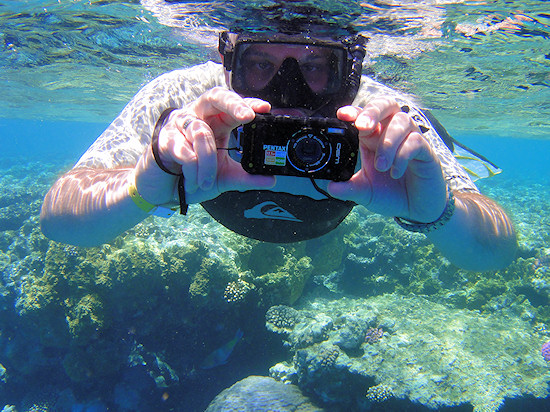 |
Although the underwater usage of the Optio W90 is not as pleasurable as it was in the case of the FT2, the test of the Tough 8010 can remind us that the situation could have always been worse.
The camera is comfortable to handle and the porous structure of the plastics ensures you a good grip even if your hands are wet. Unfortunately we won’t find such facilities as a mode selection wheel, a dedicated video mode button or even a clasp on the strap. The central position of the lens should be praised, though – it is impossible to cover during picture taking.
After pressing the „MODE” button we have access to the thematic mode selection menu. Among options available there we find “Underwater” and “Underwater Movie”. These two icons are positioned close to each other so we can change between them very quickly. Perhaps it is not as comfortable as in the case of a dedicated video button but still much more convenient that the solution used in the Sony TX5.
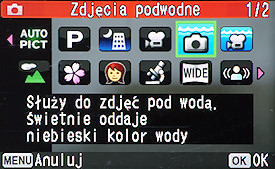 |
Unfortunately each time we change the mode we must press the „MODE” button as well and then use directional keys to select the right icon. It is the same procedure as in the case of the W60, tested one year ago, but this time we weren’t as irritated as previously. Most probably we knew what to expect and we got used to it. Still we can’t understand why the producer insists on a dedicated button which switches on the face or smile recognition function. Underwater this gadget is absolutely redundant and we are sure there’s a better way to make the most of such a button.
The fact, that after getting out of water, when you want to take a picture you won’t have to rummage around in the menu can be some consolation – the Optio W90 will choose the right white balance in the underwater mode.
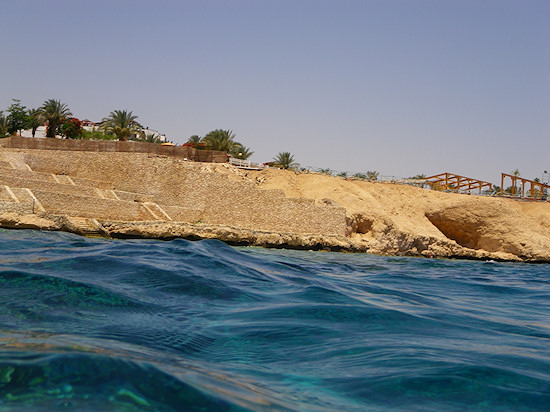 Picture taken above the water surface in the underwater mode |
When it comes to the buttons and the LCD screen we can write exactly the same as in the test of the W60. The new Optio’s buttons are very comfortable to use and their profiled shape makes it difficult to press any of them accidentally – we didn’t do it even once. The coatings of the LCD screen are of high quality so you won’t have any problems with using the screen underwater or against bright sunlight – the image will be always clear, distinct and contrasted appropriately.
At the end of this chapters we would like to mention this camera’s work speed. The autofocus action is flawless and we also shouldn’t have any reservations about the speed of menu navigation and the thematic modes change. There’s just one small “but”. If you want to do so immediately after taking a photo, with the camera apparently ready to a new action because the crop screen has been displayed, you will just see the notice “Data saving in progress”. It can last quite a long time. During this period a diode on the ON/OFF key flashes and you can’t switch anything. The most strange thing is that on a SDHC card 4 and 6 class it lasted about 2.5 seconds and on a 10 speed class card it takes as many as 4 seconds.
Underwater pictures and videos quality
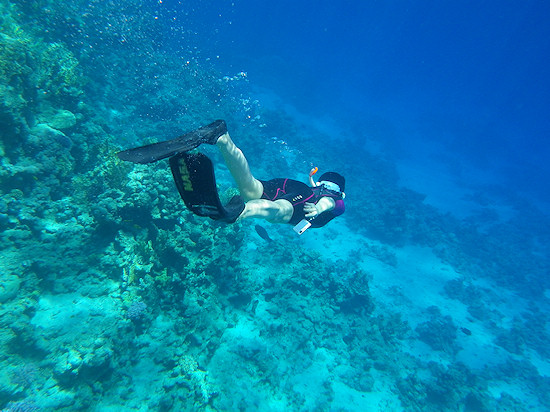 |
The first thing that sticks out when you look at the underwater photos taken with the W90 is colouring. It is simply brilliant and you can admire it for a very long time. It concerns practically all possible underwater features: shallow water reefs, the depth of the sea, objects photographed from closer distances. It’s enough to glance at the gallery miniatures at the end of the chapter to know that these pictures were taken in warm water inhabited by countless number of multicoloured creatures.
The best thing is that these effects we can get almost always, no matter whether the sun is behind our back or it shines towards the lens. The Pentax engineers should really receive a round of applause for such a performance.
The analysis of detail rendering in pictures doesn’t make us so happy though. It is not very bad in the centre – the quality is comparable to that in the photos from the Olympus of the Fuji - but the performance at edges is simply outrageous. In the case of practically every lens the further you go from the centre the lower the quality becomes but the W90 allows it to decrease below a decency level and it is clearly visible, even if you don’t display the photos at 1:1 scale.
The Optio W90 records HD1280×720 pixels movies at 30 fps and uses the Motion JPEG AVI format. As in the case of the Fujifim XP10, you must take into account the significant size of the video files – a movie lasting 30 seconds takes about 100 MB. The manufacturer didn’t make zooming possible so we are condemned to the focal length set before the beginning of the recording.
The quality of movies don’t impress us at all. You can clearly see what are the effects of the lossy compression algorithms - the detail rendition is really weak. Small wonder in many dynamic scenes the coral reef merges into a multicoloured mush. Also the colouring leaves a lot to be desired – very often we notice pink cast which becomes more intensive when you record against bright sunlight. If you want to surface all of a sudden and film the coastline in underwater mode, you will get images which resemble the colouring of pictures from the 80s of the 20th century– it can be clearly seen in the first movie presented below.
Summary
Traditionally, at the beginning we present the pros and cons lists:
-
Pros:
- good position of the lens,
- supports Eye-Fi cards,
- comfortable to use, profiled buttons,
- comfortable to hold,
- porous plastics make it easier to grip in wet hands,
- clear and legible display underwater even against bright sunlight,
- green button with the possibility of creating your own menu,
- quick and accurate autofocus,
- very good rendering of the sea depth colour,
- excellent rendering of coral reef colouring,
- acceptable colouring of photos taken on dry land in underwater mode.
- lack of stabilization,
- LCD scratch-prone,
- because of the 16:9 proportions the LCD screen could have been bigger,
- slow saving of data on the memory card,
- you must enter the menu to change into the auto mode,
- no possibility of quick swapping between the video mode and the photo mode,
- no possibility of changing the focal length in the video mode,
- very weak quality of movies,
- very weak quality of pictures at the edge,
- pink cast on underwater movies,
- tripod socket at the edge of the casing.
Cons:
When you consider the price of the tested Pentax, you will have mixed feelings too. The camera costs around 270 $ so only 50 $ less than the sensational Panasonic FT2. You must remember, though, that these 50 constitute almost 1/5 of the price of the Pentax which photos, when it comes to colouring, simply outclass the Lumix’s pale pictures.
Sample movies
Sample shots




